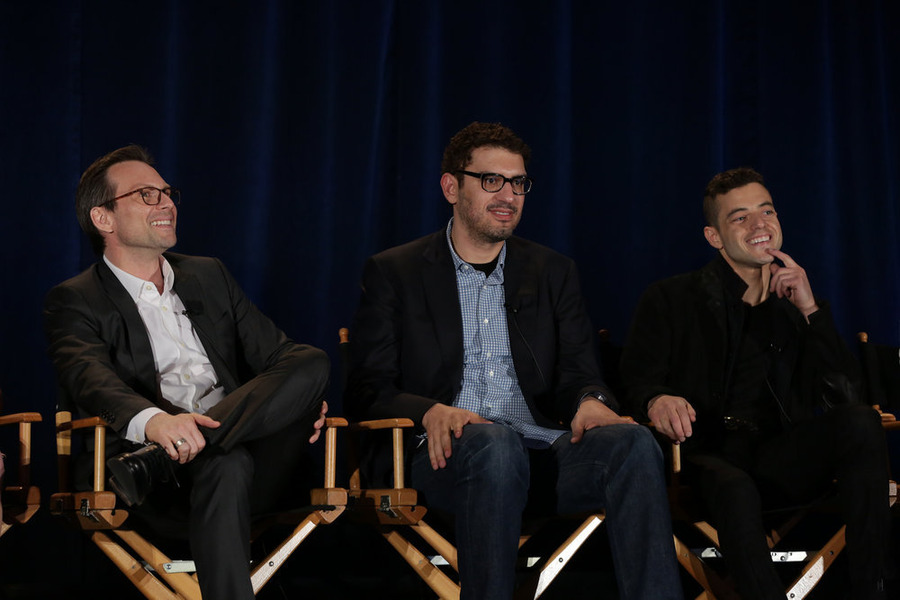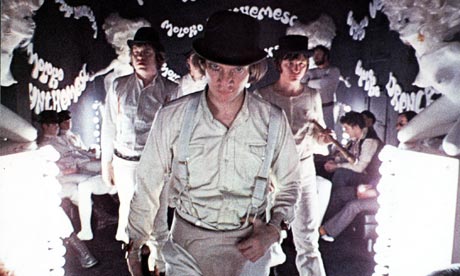By providing your information, you agree to our Terms of Use and our Privacy Policy. We use vendors that may also process your information to help provide our services. This site is protected by reCAPTCHA Enterprise and the Google Privacy Policy and Terms of Service apply.
SXSW 2016: 5 Tips From the Brains Behind ‘Mr. Robot’ On How to Make a Great Show

 One year ago, “Mr. Robot” premiered at SXSW. Now, with a Golden Globe and a hit show that’s transformed an entire network (USA), series creator Sam Esmail returned to Austin, along with his two stars (Rami Malek and Christian Slater) and a 100-foot Ferris wheel, to thank his now rabid fans.
One year ago, “Mr. Robot” premiered at SXSW. Now, with a Golden Globe and a hit show that’s transformed an entire network (USA), series creator Sam Esmail returned to Austin, along with his two stars (Rami Malek and Christian Slater) and a 100-foot Ferris wheel, to thank his now rabid fans.
READ MORE: SXSW 2016 – Joe Swanberg Gets Honest About Making a Living in Indie Film
During their SXSW panel, the “Robot” trio was extremely tight-lipped about season two during their SXSW, which just started production, except to say the ramifications of Elliott’s (Malek) actions at the end of season one would introduce law enforcement into the show. What Esmail was far more open discussing was what he believes makes “Mr. Robot” work as show and what can be learned from their success.
Rolling Takes
“Mr. Robot” is filled with acting challenges for Malek, whose character’s grip on reality is less than firm, and whose social anxiety can be intense. The key for Malek staying in the moment is that Esmail keeps the camera rolling.
“We do a lot of rolling takes,” explained Esmail. “We don’t cut, we just keep doing the scene over and over and I think that helps with your rhythm and you [Malek] get into it more. The minute you call cut, there’s all these people that want to come onto set – hair and makeup – it break up the rhythm, so we just keep going.”

A Movie Approach and a Movie Schedule
“I’m a control freak when it comes to the look of the show,” admitted Esmail, who was a fixture on the set in Season 1 and is now directing every episode in Season 2. “Most showrunners write, edit, shoot concurrently and they can multi-task. I’m more of the feature filmmaking brain of ‘you write it, you shoot it, you cut it.’ And directing all the episodes fits into that structure better.”
“No one knows what’s going to happen in this story except Sam, so why wouldn’t you want him directing everything?” added Slater.
The other benefit is that by having all of the scripts written beforehand, and having only one director, “Mr. Robot” can be the rare TV show that can adopt a more feature film-like shooting schedule. “We are a lot more efficient,” explained Esmail. “For example, if we go to a location and it’s in Episode 1, 4 and 7, in traditional television you have to keep going back [to that location] and it’s a little silly if you are doing something serialized.” Now when they go to the location, Esmail will shoot the scene for all three episodes at once.
“I was a bit trepidatious doing it — I shot scenes from Episode 7 on my first day,” admitted Malek.
The season also began with a 12-hour read through all the scripts. “I’ve never done anything like that. It was incredible,” added Slater.
Read & Take An Acting Class
During the Q&A, an aspiring writer asked what she could do break in as a writer. Esmail’s advice: read and take an acting class.
“Read a lot of books and a lot of screenplays,” said Esmail. “Then you can see how you can write in different ways, because there’s not one way to write a screenplay. After you do all that, take an acting class. You can get a script that’s a good script, but poorly written for an actor, versus a script that maybe’s ok, but is [well] written for an actor. Because at the end of the day you can have a tightly structured plot and all that, [but] in my opinion it’s all about characters and how interesting those characters are. An acting class can really help in that department.”
Voice Over is a Not a Sin
“I talk to myself,” joked Esmail. “When I started writing the VO [voice over] I knew that because Elliott didn’t talk to people that much, I needed to externalize his thoughts and feelings. I love VO. The cardinal law with screenwriting is never write VO, it’s lazy. Do not listen to that advice. ‘Clockwork Orange,’ ‘Goodfellas,’ ‘Taxi Driver’ — these are great films that have great VO. It’s how you use it and how you make it into its own character. That’s how I came up the idea that Elliott had a relationship with us [the audience]. It fits his psyche. It felt organic and made a lot of sense.”

Computer Authenticity Matters
Mr. Robot is hardly the first TV show or movie that builds computer crime and crime fighting into a thriller plot, but for Esmail, the key to the show’s success, and what set it apart, has been authenticity. “Everybody shoots computer screens and it’s always green screens and the actors don’t see what they are typing,” explain Esmail. “It automatically throws me out of it. On top of that, they put bullshit into the screens that doesn’t make any sense.”
The “Robot” creator believes strongly that authenticity with hacking and computers is just as important as authenticity in any other aspect of acting or filmmaking, which is why “Robot” employs hacking and FBI consultants, demands the art department create real screens (not just rolling matrix of ones and zeros) and that actors like Malik type real code.
But it seems to pay off. For his part, Malek said that doing homework and practicing typing was just as important to his prep as anything else he did to get into character.
READ MORE: SXSW Film 2016 Honors the Past While Facing an Exciting, Gaudy and Uncertain Future
By providing your information, you agree to our Terms of Use and our Privacy Policy. We use vendors that may also process your information to help provide our services. This site is protected by reCAPTCHA Enterprise and the Google Privacy Policy and Terms of Service apply.

















